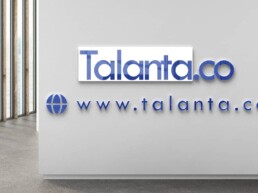Organizations must foster innovation to remain relevant and profitable to navigate today’s complex and challenging conditions. Companies can enhance and transform processes and working systems by encouraging people to innovate and create. So how best can organizations harness Microsoft Power Platform to tap into the ideas of its people?
Many clients strategically choose Power Platform for different solutions that enable them to work accurately and efficiently. For example, at Talanta Microsoft Technology Solutions, we have noticed that while organizations are excited about what Power Platform can offer to support a line of business applications, they’re equally excited about how they can empower their employees to build solutions proactively.
While IT teams know the high value on offer from adopting low-code technology, there’s a hesitation to make available Power Platform to citizen developers. Clients know that without proper controls, this could precipitate the modern-day version of Excel and Access micro-solutions that business users built to make their lives easier but lacked any actual governance, consistency, or IT transparency.
Luckily, there’s a preventative solution. By using some great features provided by Microsoft, aligning well-thought-out business processes to how people build, and providing people with a support and education network, business users can be enabled to create great things that will transform the way they work.
Power Platform fundamentals: adopting new technology
People should always come first. However, some tremendous up-front technology configurations can be implemented in correctly governing Power Platform to create a safety net. These reduce the potential risk of sprawl, lack of ownership, and incorrect use of features that are available in the platform.
To begin, Microsoft provides the Power Platform Centre of Excellence Starter Kit, a pre-built solution to support organizations in developing a strategy for adopting and supporting the platform.
Primarily focusing on Power Apps, Power Automate, and Power Virtual Agents, the solution gives admins insight into activity and overall adoption alongside features to establish audit and compliance processes.
Another great feature that Microsoft recently announced is Maker Matching. This bot-driven virtual agent provides on-the-go support for app makers, enabling them to ask questions when they require assistance.
The bot automatically supplies Microsoft-provided responses that guide users through completing fundamental to intermediate skill-level tasks. In more advanced scenarios, the bot can direct makers to pre-defined ‘advisors’ within the organization who are best suited to supporting the maker through their task. This is a great way to help new makers, build a network within a business, and grow the connection between citizen developers.
Alongside these Power Platform-focused configurations, Microsoft offers broader capabilities around data loss prevention, audit and activity logs, and usage analytics within the tenant to gain further insight into how the technology is used.
Microsoft Power Platform governance processes
Alongside the technology, we would advise organizations to adopt to support good governance; internal processes must align to give context for whatever the technology is trying to help facilitate.
An essential mindset for organizations is that governance is not a once-off transaction. The overall framework is never complete. Instead, it’s an iterative journey that matures as successes and failures are evaluated, and principles are re-defined. Therefore a necessary process is one where the current governance framework is reviewed, evolved, and communicated accurately to the business as required.
Communication is also a significant process to get right. Although good practice within Power Platform is communicated via technology-based communication channels, an internal network of makers and professionals, guides, or in-person training, it is vital that this process isn’t a one-off and that it iterates as both your usage and the technology capabilities within Power Platform evolve.
Another critical role within successful governance is establishing a process or reviewing how the Power Platform is evolving continuously. Again, the platform snowballs that staying on top of what’s changing is vital to provide users with the proper guidance and environment to build solutions that positively impact their work.
Microsoft provides release wave summaries ahead of time, often accompanied by a summary video that quickly describes the main changes coming to the platform. By periodically reviewing this information, admins and other vital roles in the governance framework can stay on top of changes and plan for how they’re handled.
Define people’s roles as part of your Power Platform governance
As with all technology, if it doesn’t work for the people it’s supposed to serve, it doesn’t work. As a result, Microsoft has defined three key roles within Power Platform that need to be supported and empowered for it to succeed.
The first role is admins. If admins don’t feel in control of the platform, they will remain hesitant about how much capability they open up to citizen developers. Admins should be educated on the technology elements mentioned in this article and supported through any certification tracks provided by Microsoft to help them become platform experts.
The next role is makers, the individuals whom any successful governance model ultimately serves. Along with the technology and process recommendations above, makers require good communication and education opportunities where they can become confident to build things. They will revert to other technologies if they aren’t brought on the journey from the beginning and empowered to utilize Power Platform as the organization intends.
Finally, a role we recommend as defined in every governance framework or Centre of Excellence is that of the advisor. Advisors are business users with varying experience in creating Power Platform-based solutions. Still, they serve as both an advisory network and advocates for the continued adoption of the capabilities.
An advisor network should reflect a fair representation of the organization’s varying technical skills, seniority levels, and working styles. This is so new makers have comparable advisors to approach with questions about building apps that will help them work better.
Build upon the fundamentals of Power Platform
Power Platform and low-code technology are being invested in and adopted by organizations rapidly. As a result, Microsoft hopes that Power Platform will eventually become as core to a professional’s toolset as Excel or Access has proven to be.
With the help of a good governance framework that may eventually grow into a complete Centre of Excellence, Power Platform can become a tool that employees use to build robust solutions that transform how they and the organization they represent work.
Supported by Microsoft, our broad experience in Microsoft products gives us an edge. We would love to chat more and help transform your organization digitally. So please get in touch with us at info@talanta.co and let us help you on your Power Platform journey.







